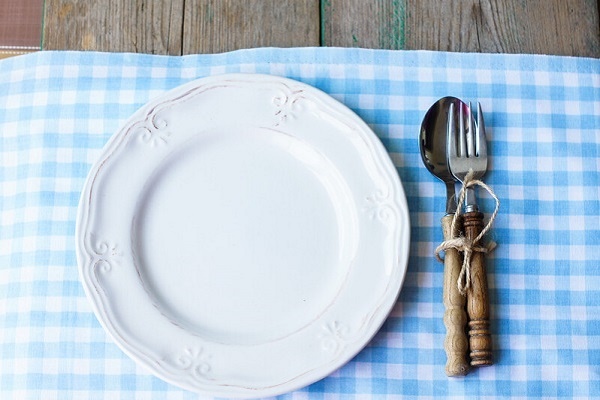Canning and Preserving Recipes
Homemade Sauerkraut

Ingredients
- 48 pounds cabbage
- 1 pound salt
Instructions
- Let cabbage heads stand at room temperature for about 24 hours to wilt. This causes the leaves to soften slightly and become less likely to break when cut. Wash the head and remove outer leaves. Cut heads into quarters and remove the cores. With a sharp knife, shred 5 pounds of cabbage 1/8 to 1/4 inch thick. Place the shredded cabbage in a large mixing bowl and sprinkle with about 3 tablespoons of the salt. Mix the salted cabbage with your hands or with a stainless steel spoon and let it stand 3 to 5 minutes.
- Wash a 10 gallon crock with soapy water, rinse and scale it with boiling water. Pack salted cabbage into the crock. A brine will form as you press the cabbage down. Repeat the shredding and salting in 5 pound lots until the crock is filled to within no more than 5 inches of the top. The brine should cover the cabbage. If it does not, add additional brine by heating 1 1/2 tablespoons of salt with 1 quart of water. Cool the brine to room temperature before adding it to the crock.
- To cover the cabbage and weight it down to keep it submerged in the brine, fill a clean, large, heavy plastic bag, such as heavy-duty trash bag, with water and lay it over the cabbage. Fit the bag snugly against the inside walls of the crock to prevent the surface of the cabbage from being exposed to air. This will prevent the growth of a yeast film or mold. Add more water to the plastic bag, if necessary, to keep the cabbage submerged. Seal the bag with a twist tie. Cover the crock with plastic wrap.
- Fermentation will take place from 3 to 6 weeks depending on the room temperature. The ideal temperature is 75 degrees F. At 75 degrees F fermentation will take about 3 weeks; at 70 degrees F, 4 weeks; at 65 degrees F, 5 weeks; and at 60 degrees F allow about 6 weeks.
- Tightly packed in covered containers, the kraut can be safely kept in the refrigerator for several months. If you don't have space, can the sauerkraut.
- Canning the Sauerkraut: Bring the kraut to a simmer; do not boil. Pack it into clean, hot jars, leaving 1/2 inch headspace; seal. Process in a water bath canner for 20 minutes for quarts or 15 minutes for pints. Start counting the processing time when the water in canner starts to boil.
Yields 16 to 18 quarts.
Notes
To make a smaller quantity of sauerkraut, reduce the recipe ingredients proportionately. Allow 2 ounces salt to each 6 pounds of cabbage.
Old-Time Sauerkraut Method
After packing the crock with salted cabbage, place a piece of thin, white cloth (such as muslin) directly over the cabbage and tuck the edges down against the inside of the container. Cover the cabbage with a heavy plate that fits snugly inside the container so that the cabbage is not exposed to air. Put a weight on top of the plate so that the cabbage is fully immersed in the brine. A glass jar filled with water makes a good weight. The brine should come up 2 inches above the plate, making daily skimming easier.
Cover the crock with a clean terrycloth towel and top with plastic wrap to prevent evaporation. Tie string around the crock to hold the towel and plastic wrap in place. Remove the scum daily from the surface with a scalded stainless steel spoon. Replace the cloth and plate with a clean one. Cover the crock again with the towel and plastic wrap. This method takes about the same length of time as the previous one.
The sauerkraut is done when bubbles stop rising to the surface. Taste the kraut. When it suits your taste, remove it from the crock. Refrigerate the kraut in covered containers or pack it into jars and process as described above.

